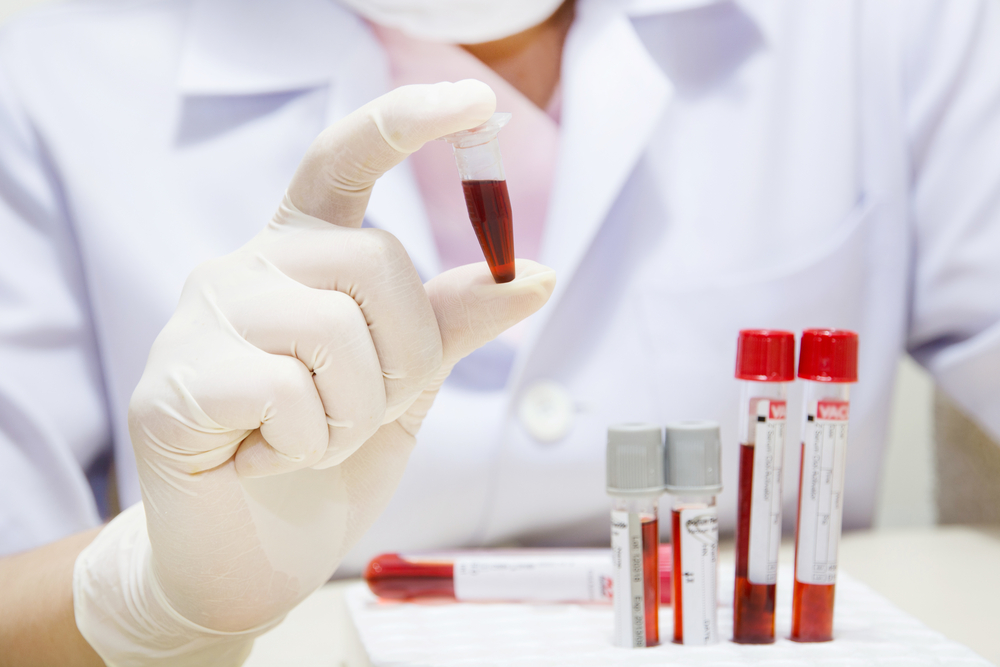Blood Proteins May Help Measure Effectiveness of Metformin in Fragile X

Measuring the levels of three blood biomarkers could help identify patients with fragile X syndrome who are likely to benefit from treatment with the diabetes medicine metformin, a study suggests.
The study, “Blood-Based Biomarkers Predictive of Metformin Target Engagement in Fragile X Syndrome,” was published in the journal Brain Sciences.
Over the past two decades, research with preclinical models have shed new light on the molecular mechanisms underlying fragile X. However, translating these findings to humans and into the development of effective therapies has fallen short.
Having biomarkers to classify patients according to symptoms, comorbidities (co-occurring conditions), and disease activity is critical for finding effective treatments.
Researchers at the University of California, Davis identified several proteins — RAS, hexokinase 1 (HK1) and matrix metalloproteinase 9 (MMP9) — whose levels were decreased in the hippocampus of mice engineered to mimic fragile X symptoms, and in the blood of patients with the disorder. (The hippocampus is a brain region important for learning and memory, among other functions.)
The researchers also showed that treating fragile X patients with metformin — a type 2 diabetes therapy — improved language skills and behavior, while also normalizing appetite, resulting in a lower weight gain.
The UC Davis researchers investigated whether using metformin led to changes in the blood levels of RAS, HK1 and MMP9. While RAS is important in cellular functions such as growth and migration, HK1 is involved in energy production in cells. In turn, altered regulation of MMP has been implicated in brain development and fragile X processes. Previous studies showed that the levels of all three proteins are changed in fragile X patients compared to typically developing individuals.
In addition, the team explored whether potential changes in these proteins correlated with therapeutic benefits in the Clinical Global Impression-Improvement (CGI-I) score and body mass index (BMI), a measure of body fat.
The CGI-I is a seven-point scale that assesses how a patient’s illness has improved or worsened compared to the start (baseline) of treatment. Lower scores reflect better response to treatment.
In total, the researchers analyzed blood samples from 17 patients with fragile X (12 males and five females), ages 1 to 67, who had been treated with metformin for one to 30 months. The therapy’s dose ranged from 50 to 1,500 mg twice a day in most patients, with two participants receiving metformin once or three times per day.
Results showed that MMP9 levels increased in 10 participants and decreased in six. Levels of HK1 increased in seven patients and decreased in other nine. As for RAS, measured in 15 participants, 13 showed increased levels while the other two (both males) revealed a lower amount.
In 10 patients, the researchers saw a normalization of BMI, which they defined as gaining weight if the patients started underweight, maintaining normal weight if they began at normal weight, or losing weight if participants began metformin as overweight.” One man, obese at study start, gained weight after treatment.
Levels of RAS increased in nine of 11 patients with available BMI data, with all experiencing a normalization of BMI. In one patient who had no benefits in BMI, the levels of RAS decreased. One other patient who had normalized BMI had no changes in RAS.
No association was found between the levels of MMP9 and normalization of BMI. Yet, decreased BMI correlated with higher MMP9 gene expression.
The data also showed that seven of 11 patients had increased HK1 levels, with six experiencing normalized BMI.
Regarding CGI-I, the scientists saw no worsening of symptoms among 16 participants. Importantly, only two women did not show improvements with treatment. Clinical improvement correlated with lower levels of HK1 and higher of RAS. As for MMP9, males with lower levels had better CGI-I score after treatment, while no such link was seen in females.
“In summary, we have identified, in a small pilot cohort, usable molecular, blood-based biomarkers to track target engagement and treatment efficacy of metformin in FXS [fragile X syndrome],” the researchers wrote.
“ We hope this result can be scaled into larger trial cohorts to help develop usable biomarkers for FXS patient stratification and treatment outcome measures,” they concluded.






